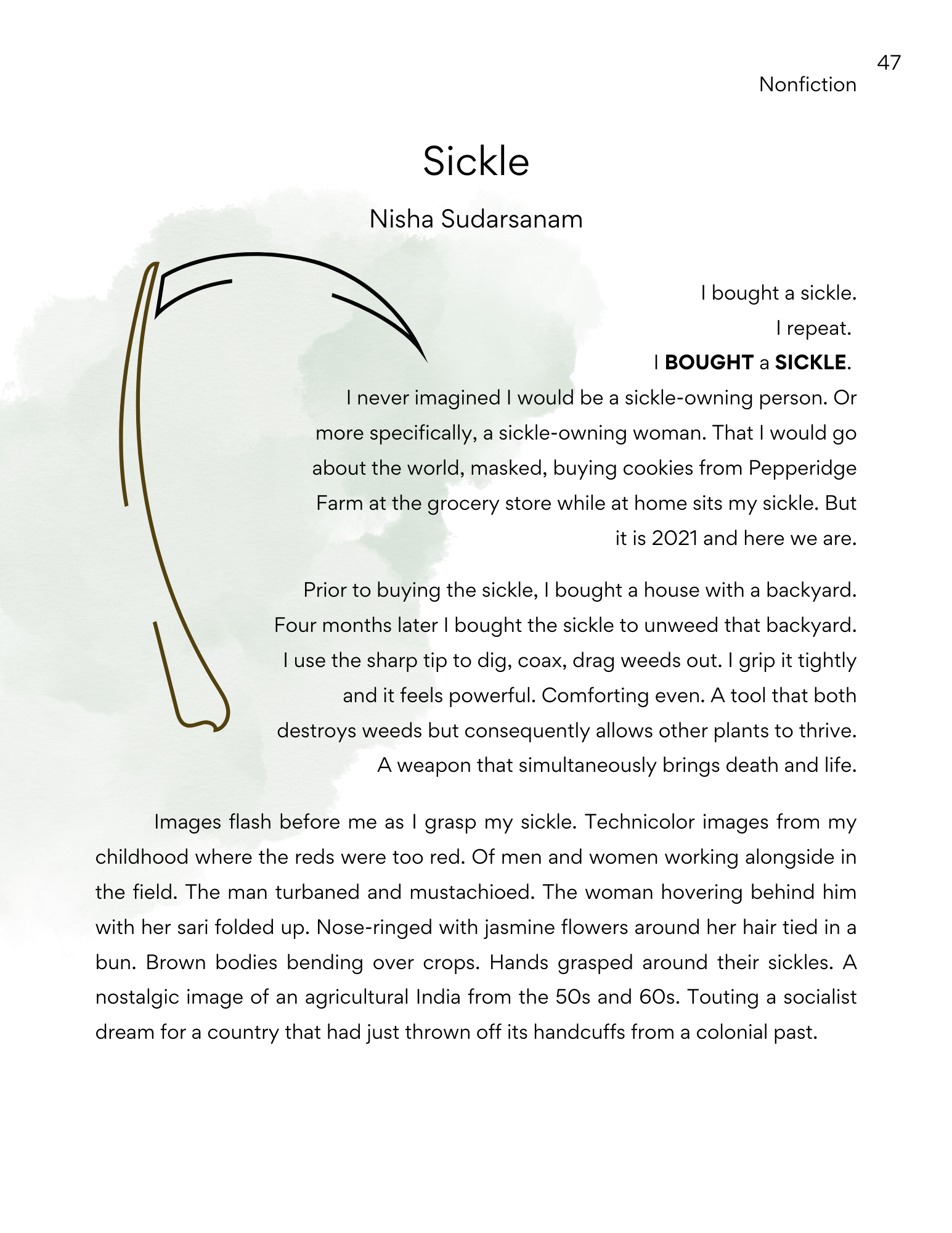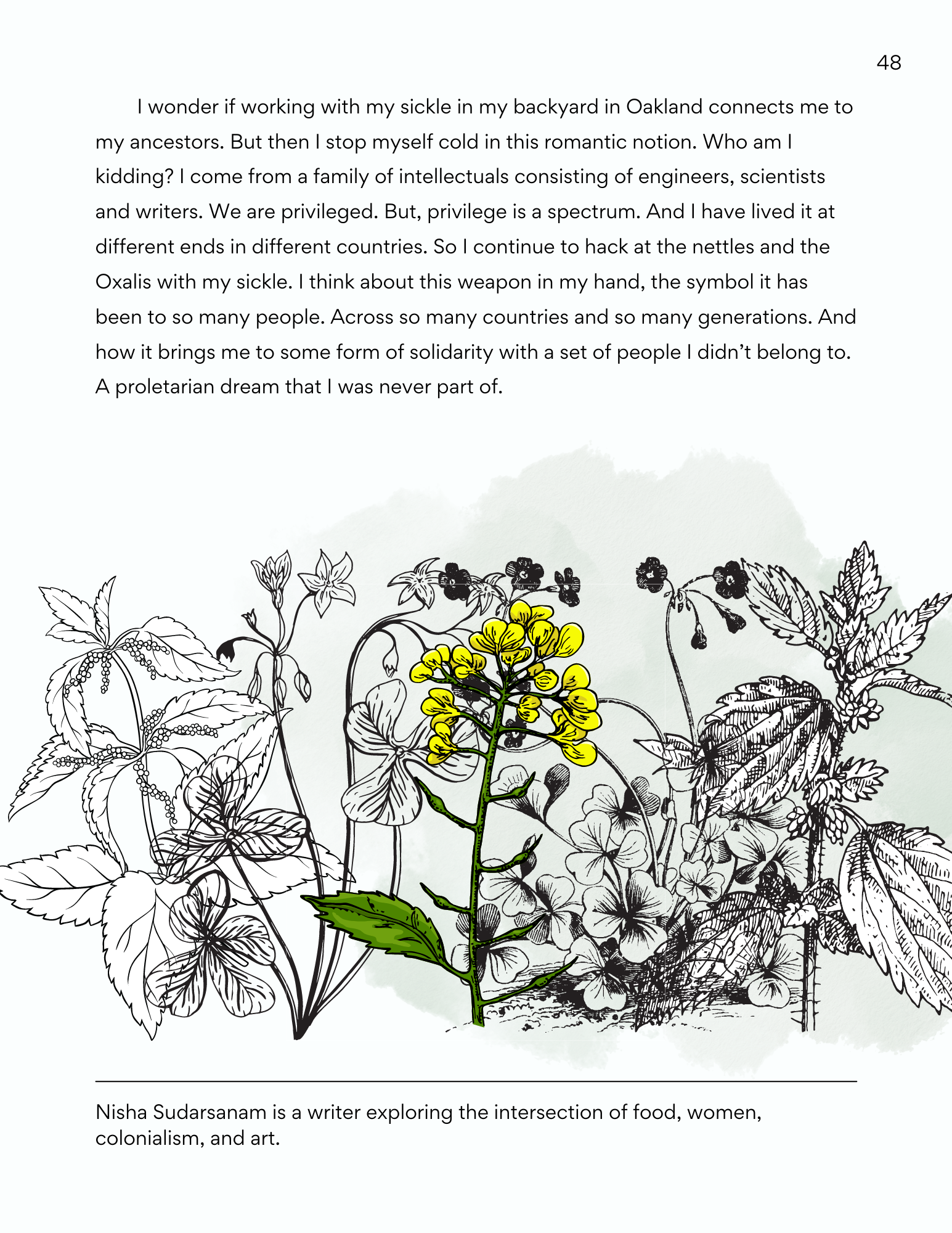Sickle
I bought a sickle.
I repeat.
I BOUGHT a SICKLE.
I never imagined I would be a sickle-owning person. Or more specifically, a sickle-owning woman. That I would go about the world, masked, buying cookies from Pepperidge Farm at the grocery store while at home sits my sickle. But it is 2021 and here we are.
Prior to buying the sickle, I bought a house with a backyard. Four months later I bought the sickle to unweed that backyard. I use the sharp tip to dig, coax, drag weeds out. I grip it tightly and it feels powerful. Comforting even. A tool that both destroys weeds but consequently allows other plants to thrive. A weapon that simultaneously brings death and life.
Images flash before me as I grasp my sickle. Technicolor images from my childhood where the reds were too red. Of men and women working alongside in the field. The man turbaned and mustachioed. The woman hovering behind him with her sari folded up. Nose-ringed with jasmine flowers around her hair tied in a bun. Brown bodies bending over crops. Hands grasped around their sickles. A nostalgic image of an agricultural India from the 50s and 60s. Touting a socialist dream for a country that had just thrown off its handcuffs from a colonial past.
I wonder if working with my sickle in my backyard in Oakland connects me to my ancestors. But then I stop myself cold in this romantic notion. Who am I kidding? I come from a family of intellectuals consisting of engineers, scientists and writers. We are privileged. But, privilege is a spectrum. And I have lived it at different ends in different countries. So I continue to hack at the nettles and the Oxalis with my sickle. I think about this weapon in my hand, the symbol it has been to so many people. Across so many countries and so many generations. And how it brings me to some form of solidarity with a set of people I didn’t belong to. A proletarian dream that I was never part of.



